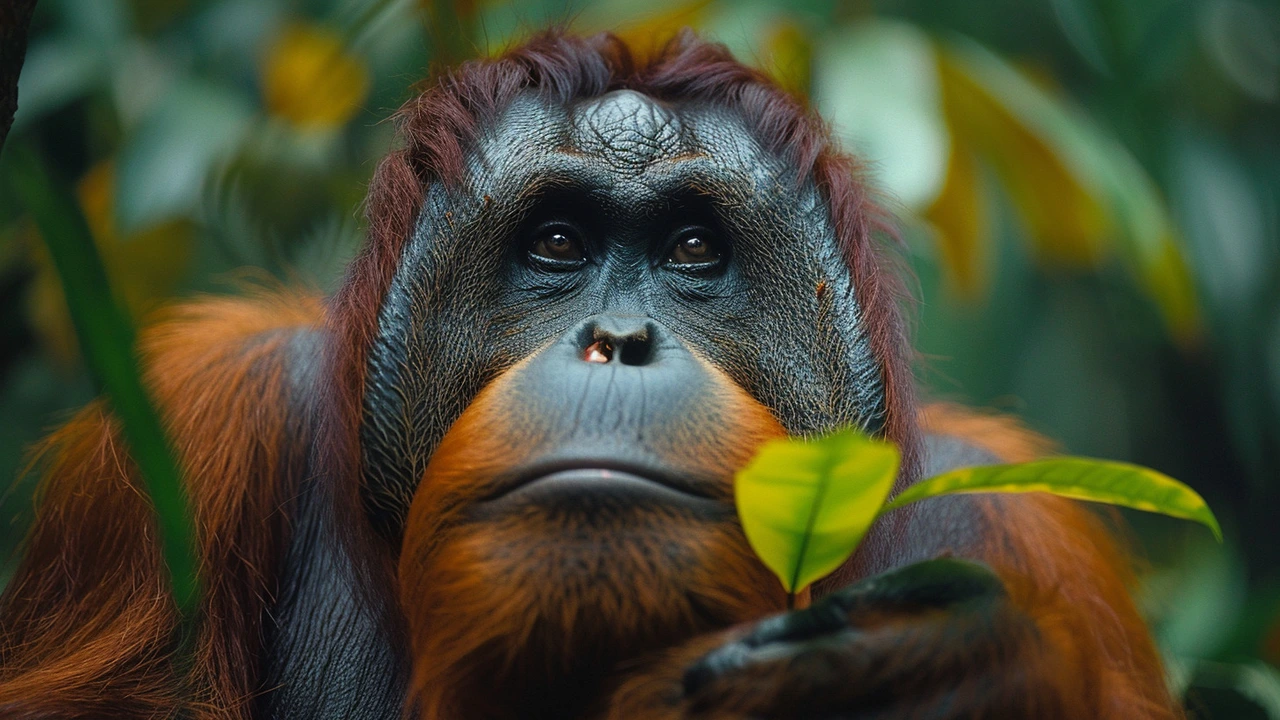
Breakthrough Observation: Sumatran Orangutan Uses Medicinal Plant to Heal Wound
Orangutan Employs Medicinal Plant in Self-Healing: A Glimpse into Primate Intelligence
In the dense, biodiverse expanse of Gunung Leuser National Park in Indonesia, scientists witnessed a remarkable instance of wildlife intelligence and the use of natural medicine in June 2022. A Sumatran orangutan, which researchers identified as Rakus, exhibited what may be the first-ever observed behavior of a primate self-medicating an open wound using a plant known for its medicinal properties. The plant in question, known locally as Akar Kuning or yellow root, was not randomly chosen. Rakus seemed to understand exactly what he needed. He meticulously picked and chewed the plant, applying its juices and poultice directly onto his cheek wound repeatedly, a strategy that eventually led to the wound's healing.
This incident of self-medication opens a new chapter in understanding animal behavior, specifically how animals use their ecological environment to manage their health. Recorded meticulously by researchers at the Suaq Balimbing research station, the behavior was later analyzed and documented in the prestigious journal, Scientific Reports. The implications of this are profound, demonstrating a level of self-awareness and cognitive abilities in orangutans that were perhaps, until now, grossly underestimated. The Sumatran orangutans, known scientifically as Pongo abelii, are a critically endangered species, making this discovery even more significant. It not only adds depth to our understanding of these majestic creatures but also underscores the critical need for their conservation, as their population currently stands at a worrying count of around 14,600 globally.
The Potency of Akar Kuning
Upon closer examination of Akar Kuning, researchers at the station highlighted that this is no ordinary plant. Possessing antibacterial, anti-inflammatory, anti-fungal, antioxidant, pain-killing, and anticarcinogenic properties, it's clear why Rakus selected this particular flora for his pain and healing. Historical usage of similar medicinal plants can be traced far back to 2200 B.C.E. in ancient medical manuscripts, suggesting humans have long shared knowledge or concurrent evolution in the use of herbal remedies with their primate cousins.
Yellow root’s application by Rakus not only cures his physical ailment but potentially opens doors to more discoveries related to animal self-medication practices. It begs the question: how much do animals understand about their own health and the natural resources available to them? Moreover, the precise selection and application of yellow root by Rakus show an impressive example of animal cognition, which could have been developed through generations of orangutans observing and learning from each other or through individual trial and error.
Broader Implications for Science and Conservation
The significance of Rakus’s actions extends beyond the immediate health benefits. This behavior highlights an adaptive management of injuries that could shed light on the evolution of medical knowledge itself, offering a potential window into the origins of human and primate medicine. Furthermore, understanding these behaviors can lead to better conservation strategies. Recognizing that orangutans, and possibly other wildlife, use specific plants for self-healing, can inform habitat protection efforts, ensuring these natural pharmacies remain intact and accessible. Conservation efforts in Gunung Leuser National Park and similar habitats are crucial. With the highest density of orangutans worldwide, the park’s flora not only supports the physical health of its primate inhabitants but also forms the backbone of their ecological intelligence and survival strategies.
In conclusion, the remarkable behavior exhibited by Rakus not only stirs the human imagination but also calls for an intensified focus on conservation policies. By protecting such intelligent species and their habitats, we safeguard a living library of natural medicine that has the potential to enrich scientific understanding and medical practices, perhaps even for human benefit. The pathway Rakus has shown us intertwines the survival of his species with the preservation of traditional knowledge, wrapped in the lush greenery of the Sumatran rainforests.